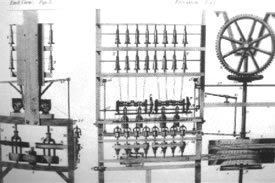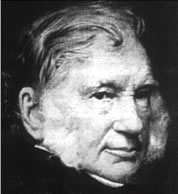Project Background
 Arkwright's Waterframe (Courtesy of Rea's Encyclopedia)
Arkwright's Waterframe (Courtesy of Rea's Encyclopedia)
In the beginning - The textile industry has played a central role in the history of Britain for over 500 years. The starting point was centred around wool and later cotton became the major commodity that was influencing the economy.
Through inventions like Richard Arkwright's 'waterframe' and James Hargreaves 'Spinning Jenny', the textile industry received the technological advances that it needed and this in turn pushed Britain to be the world's major proponent in the textile industry.
Further expansions continued until the mid 19th century, when difficulty in obtaining raw cotton and competition from other countries began to mark the decline for the cotton industry in Britain.
Despite this, employment in the textile industry and its contribution to the economy continued to be a major factor well into the 20th century, when alternatives to cotton were beginning to challenge the once supremacy of cotton.
Emergence of Courtauld's
 W Samuel Courtauld III
W Samuel Courtauld III
The Courtaulds family had arrived in Britain as French Huguenot refugees in the 17th century and soon became one of the major textile industrialists. The family business focused on 'artificial silk' or its other name rayon production, which led them to have at one point the largest market share in the world.
Although Courtauld's total rayon production fell by about 25 per cent from 1928 to 1930, it had more than recovered by 1932 and in 1939 was well over three times what it had been in 1929.
It was under this backdrop that Courtaulds opened its rayon factory in Preston at the Red Scar site. The factory was the largest of its type and by 1970 it was the largest rayon factory in the world.
However, Courtaulds profits fell to £13.5 million in 1975 (having been £19 million in 1945) and soon talk was in the air about closing factories down. In 1980, the Courtauld's Red Scar site was closed, making some 2600 people redundant in the process, a third of whom were from a minority ethnic community.

